When John Lennon and Paul McCartney first performed together on July 6, 1957, they had no clue how much their partnership would influence the world. They played in the garden at St. Peter’s Church in Liverpool in a group called The Quarry Men, but soon formed a group that transformed the entire music industry.
Your brand doesn’t have to set out to revolutionize your industry, but you can achieve groundbreaking results by forming partnerships with other brands, publishers, and influencers.
Partnership marketing extends well beyond the marketing functions of an organization and touches nearly every part of your business. Your team can use a unified framework that takes you through the entire partnership life cycle, which forges deeper relationships so you can grow and scale your brand.
The partnership life cycle framework applies to all partnership types, so you can apply these principles to each collaboration you create.
Keep partners productive with the partnership life cycle
The partnership life cycle helps program managers to manage their programs systematically. Much like in business or sales, it resembles a funnel each relationship goes through as part of your program’s activity. The partnership life cycle consists of six stages:
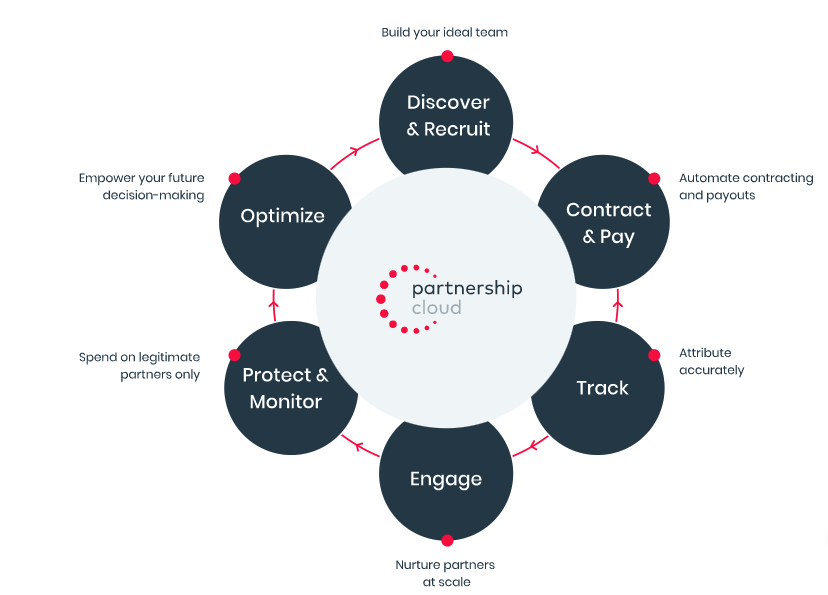
Each stage in the relationship builds upon one another to create a cyclical, replicable process to manage partnership marketing and drive success.
Want to build your expertise in the affiliate and partnerships industry? Uncover the myriad digital marketing channels and how affiliates and partnerships slot in this free PXA certification.
Discover and Recruit: Build your ideal team
A successful partnerships program starts by finding and recruiting potential brands or content creators that allow you to reach and indirectly engage with your target audience. Not every potential partner will reciprocate your desire to collaborate, so cast as wide a net as possible to launch a program in the early stages. Furthermore, a wider net ensures that you cover the longtail of online activity.
Scale truly makes a difference. Companies that experience revenue growth rates greater than 20 percent from partnerships double their number. Moreover, companies that continuously recruit and onboard new partners see dramatic revenue increases compared to companies that work with only existing ones. For instance, new partners account for 111 percent of 145 percent revenue growth between the 2019 and 2020 Cyber Week shopping periods.
As a vital stage, all other stages build upon Discover and Recruit. This stage may also feel like the most tedious because it’s time consuming to scour the internet for influential people in your niche.
That’s why brands turn to software for support. You can access databases through platforms like impact.com to target the exact audience size, niche, partner type, demographics, and content type you want to align your campaigns with.
To get the most out of the process, remember the following:
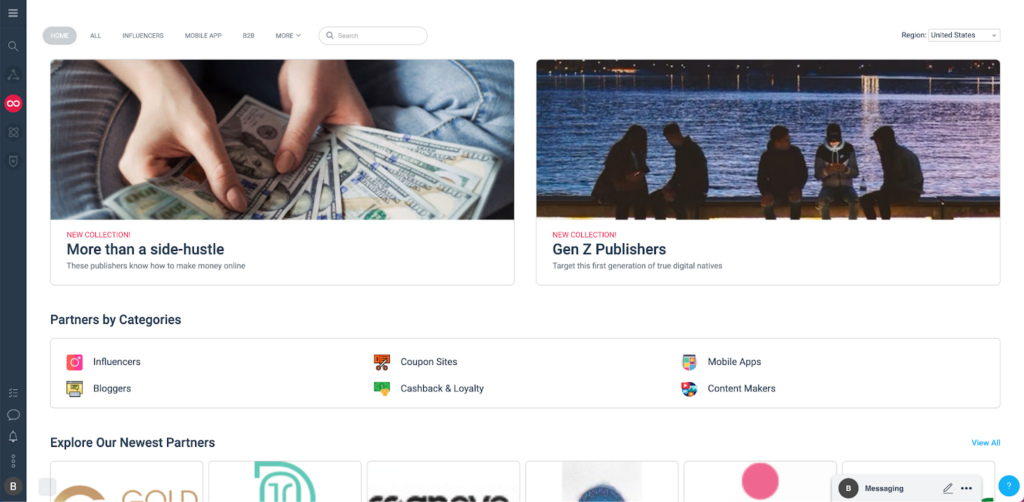
(impact.com’s search and discover database gives you access to partners by category, audience size, partner type, and more.)
- Use discovery databases, crawlers, and partner marketplaces to look for potential partners
- Search for partners based on criteria appropriate for your program’s partnership type
- Remove partners that might not align with your goal to refine the list of prospective partners
- Pinpoint the most desirable partners that speak to the keywords, tags, and topics your business aligns with
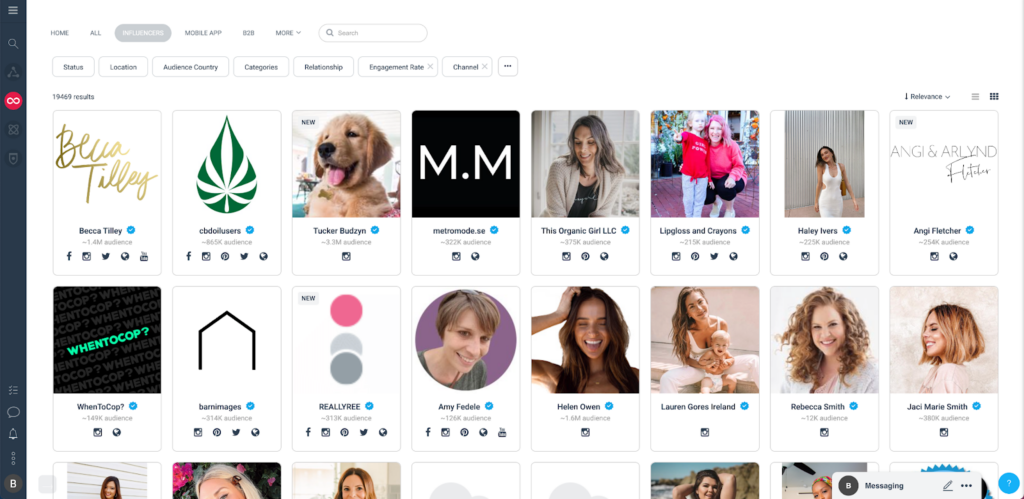
(You can vet the right partners through tailored searches, and perform your initial outreach and nurturing all from the same platform.)
Once you find partners that may work well for your business, you’ll want to:
- Personalize your outreach by referring to targets by name
- Keep a pulse on what’s working and which areas need attention
- Vet prospective partners to ensure they align with your brand values (do this after responding in the affirmative)
- Follow up to get a response from a potential partner
Contract and Pay: Automate agreements and payouts
Contract and Pay helps get a program up and running. While recruitment encourages you to dream big, Contract & Pay aims to dig into the details to formalize the relationship with each prospective partner.
Before these partners join your program, you will create a contract that outlines the commissioning rules, your program’s terms and conditions, and remuneration. To scale, you’ll want to ensure automated payouts disburse commissions to your partners for the valuable conversions they deliver.
The core steps of the Contract and Pay stage include:
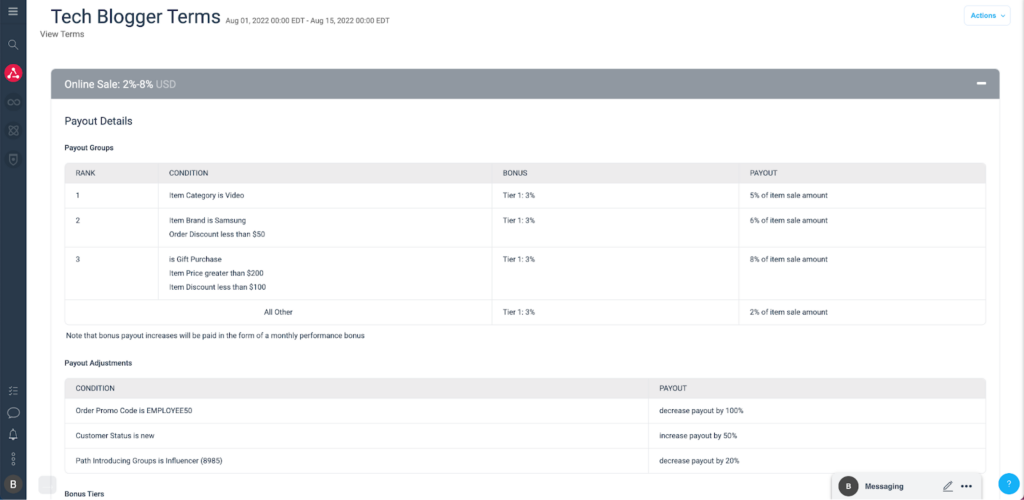
(You can create custom contracts with impact.com to reflect the exact terms you agree upon with your partners. All of your contracts and payment agreements are managed and updated within your account.)
- Contract with your partners to properly set up terms that reflect this partner’s value
- Customize your contracts depending on where the partner will deliver the most value in the funnel
- Negotiate payouts, tiered performance bonuses, or special rates for high-margin categories with your most important partners
- Pay your partners in the currency of their local market in an easy, automated, and timely way
Track: Set measures for attribution
The Track stage represents the first phase of onboarding. In this stage, you set up partners to effectively measure how they contribute to your partnership marketing program.
Tracking involves tracking links, vanity URLs, dynamic coupon codes, and APIs. As a result, everything is tracked, including clicks, intermediate success events, and final conversion events.
It connects your recruitment efforts with the partnership’s actions: the conversions, traffic, sales, and new audiences that you enlist the partners to provide. When you track, you measure the value of a collaboration that propels you to the next life cycle stages.
Remember, the tracking stage is a two-way street. Yes, tracking helps determine partners’ value, but your partners also require information to understand their value and adjust tactics to be better partners in the future.
This stage requires partnerships managers to:
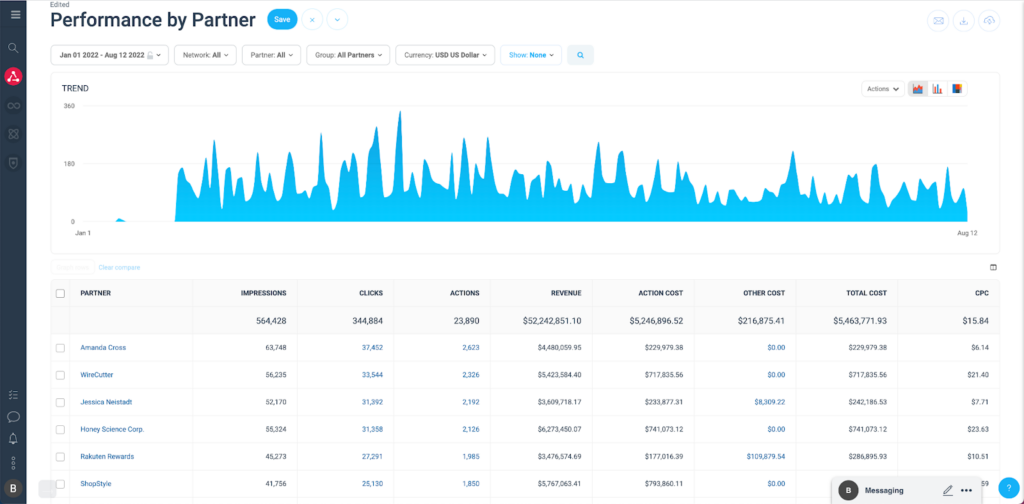
(View performance by partners to measure individual contributions to your campaigns, and use this data to improve performance, incentivize top conversions, and more — all inside an impact.com account.)
- Track events connected to your program’s goals. At a bare minimum, track clicks, revenue, and conversion events
- To go deeper, record partner-driven customer purchases, coupon codes, app installs, and web traffic
- Be creative and use mechanisms beyond tracking links and first-party cookies.
- For instance, use APIs to track detailed actions like app installs, subscription upgrades, and even cross-device conversions
- Modernize your tracking solutions with the latest technology
- Supply details to the software platform you use for tracking so you accurately capture the cross-device journey
Engage: Nurture partners at scale
Once you onboard partners, you need to activate and cultivate relationships. Beyond the technical pieces in a tracking setup, they need to understand your brand and how to market your products. Furthermore, knowing how to position your product and what leads to the best results proves helpful in partners’ success.
Partnerships work best when both sides are active participants and feel like they get something from the relationship.
Engagement ensures each collaborator has the resources they need to succeed and helps get those who’ve fallen behind on agreed-upon expectations back on track.
To get the most out of this stage, remember to:

(Send a newsletter to deploy messages, updates, and onboarding for new features to partners all at once, or to a select few.)
- Set performance goals to activate partners, then empower them through a steady stream of updates
- Nurture your partnerships through an always-on email program that keeps your brand and program top-of-mind
- Re-engage partners that fail to achieve agreed-upon performance goals or momentary lapse with responsibilities
Protect and Monitor: Spend on legitimate partners only
The Protect and Monitor stage ensures that everything laid out in earlier stages goes as planned. At this point, partnership managers must remain vigilant and protect themselves from high-risk traffic from bad actors. Increased interest in partnerships attracts both scammers and legitimate businesses. Even a well-run partner program falls victim to fraud issues.
The other focus of the Protect and Monitor stage aims to maintain overall program integrity. Payment terms, brand assets, and creatives all agree that partners present a company in the best light and act in good faith.
To get the most out of the Protect and Monitor stage, remember to:
- Verify all transactions to ensure protection against all forms of fraud
- Monitor how partners market your business
- Keep an eye out for violations of your program rules, even unintentional ones
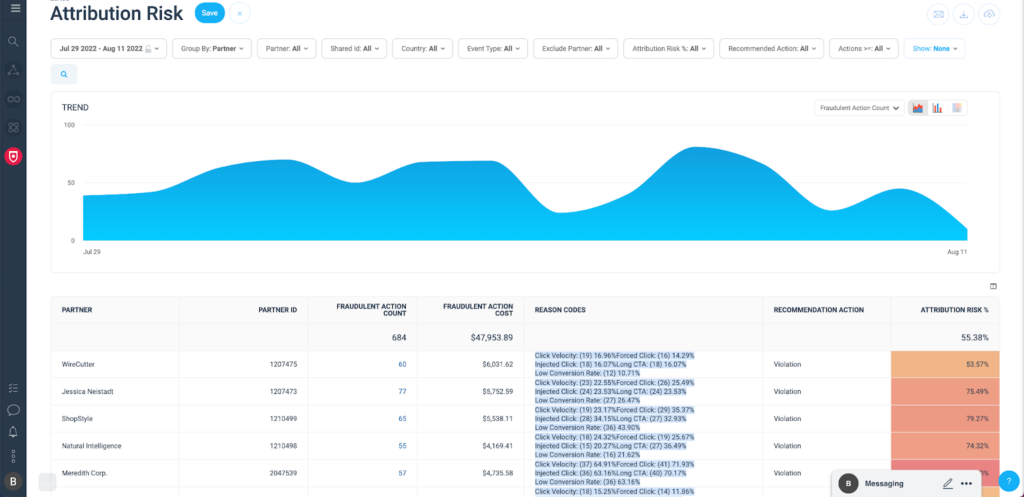
(Use attribution risk reports to assess the quality of partner traffic so you stay in-the-know of which partners send the best traffic to your site.)
- Route potential customers to correct pages, even if they click on an expired code or an obsolete offer.
Optimize: Empower your future decision-making
The Optimize stage enables brands to scale their programs and capture the massive revenue potential of partnership marketing. In this stage, you aim to validate your partnerships’ contributions to your business goals, identify those that drive high incremental value but whose commissions may not be proportional to their contributions, and work closely across all collaborations to maximize return.
Long-running relationships deliver more of a good thing. In the optimize stage, you make adjustments based on keen observations of how each partner contributes to your wider program.
For instance, a partner sends several new visitors to your site that convert but does not receive any commission due to the last-click agreement. In this case, you adjust your contract to ensure the partner receives a reward and continuous delivery of new prospects.
To optimize your overall mix and ensure partner diversity contributes value throughout the customer journey, do the following:
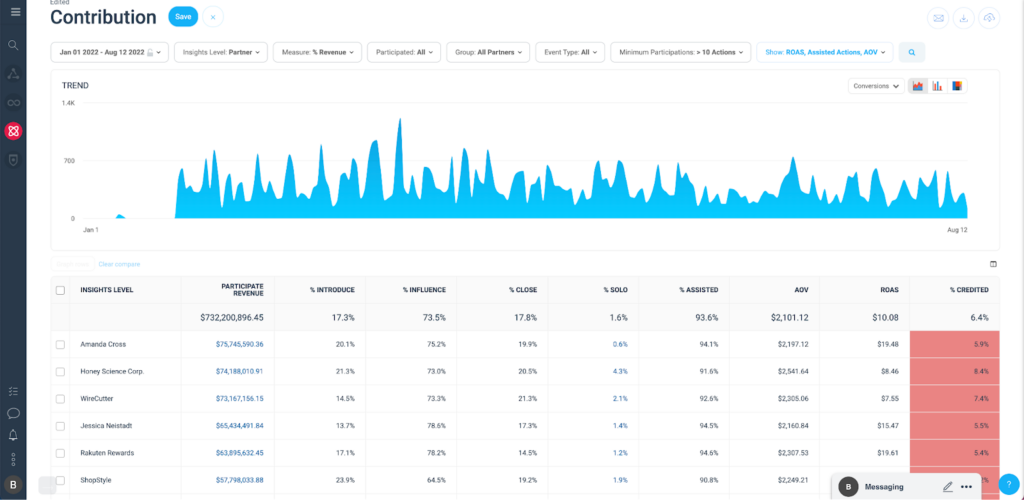
(Discover how often each partner acts as an Introducer (first touch), Closer (last touch), or Influencer (any other point in the conversion path) with a contribution report.)
- Use ROAS to pinpoint areas of success in performance and where there’s room for improvement
- Assess the behavior each partner drives and how these behaviors fit into your wider partner plan
- Identify where partners deliver incremental value to grow your partner program. Also, identify customers with high lifetime value
Automated technology makes partnership marketing management easier
Growing a sizable, sustainable partnership marketing program means you need the right tools. Automation helps build a program that handles all aspects of the partnership life cycle and enables you to overcome the most common challenges.
Learn how smart partnerships drove demand for Disney Streaming during the pandemic — allowing the team to reach record-breaking revenue goals. Listen as impact.com’s CEO sits down with Elisa Charbonnel, the Director of Paid Media at Disney Streaming.
She shares her thoughts on how due diligence backed by data will become even more important in the partnership economy as big tech continues to disrupt platforms and long-established marketing channels. You can find this episode of The Partnership Economy through your favorite podcast app.
Listen now: Elisa Charbonnel, Director of Paid Media at Disney Streaming, on how to pivot partnerships in turbulent times.
Also, check out these resources to further expand your knowledge of partnerships marketing:
- Best practices: Discover and Recruit (ebook)
- Best practices: Contract and Pay (ebook)
- Best practices for tracking your partnerships (ebook)
- Best practices for engaging partners (ebook)
- Best practices to protect and monitor your partnerships (ebook)
- Best practices for optimizing your partnerships (ebook)
- Your how-to guide to managing partnerships throughout their life cycle (infographic)





